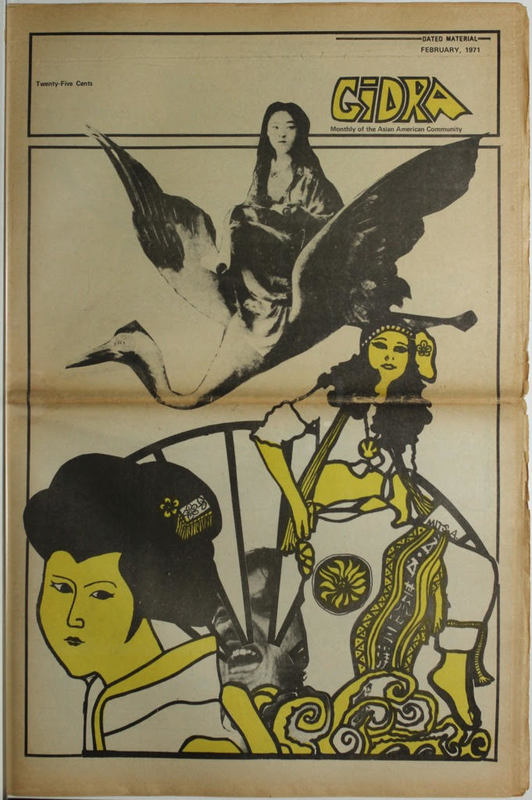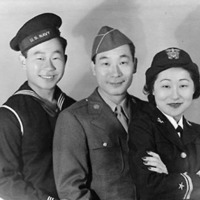"Model Minority"
Creating a “Model Minority”
The concept of the “model minority” was first established by sociologist William Petersen in an article, “Success Story, Japanese American Style,” published in the 1966 New York Times Magazine (Petersen). In this article, Petersen explains the “success story” of the Japanese Americans who, despite years of racial prejudice, discrimination, pre-WWII anti-Japanese sentiment, hate crimes, and other adversities, were still able to achieve a high socioeconomic status through hard work and cultural values that called for discipline, work ethic, and compliance to social hierarchy (Petersen).
...Japanese Americans, despite having faced ‘the most discrimination and the worst injustices’ [...], have attained great success.— Brian Niiya, Densho Encyclopedia
Petersen’s article of praise on Japanese Americans and AAPI communities more broadly had unintended repercussions. His article created the stereotyping framework in which Asian Americans are accepted as economically useful members to American society. This image of the Asian population served as an impetus for a deceptively positive reputation of AAPIs in American society, particularly on the part of white Americans who had seen the influx of Asian immigrants in the latter half of the twentieth century as a potential threat to the preexisting status quo.
The “model minority” is controversial, as it has historically been used to justify the lack of government action in alleviating socioeconomic disparities between certain demographic groups. In addition, the “model minority” label mainly applied to Asians and Asian Americans (both South and East Asians), meaning that other minorities, particularly African Americans and Hispanic Americans, came to be compared to their praiseworthy “model minority” status. On the one hand, this comparison reinforces the idea that Asian Americans are “good” minorities, due to their alleged cultural propensity for discipline (Petersen), and are presumably more likely to be law-abiding, productive citizens. On the other hand, this comparison promotes the stereotype that Hispanics and African Americans are “bad” minorities, with a reputation as criminally prone, welfare recipient citizens. As a result, the “model minority” fosters stigma that separates Asian Americans from other minority groups as a “superior” minority. However, Asian Americans are still considered a minority and therefore are seen as not on the same level as white Americans, who then perceive Asian Americans as an obedient, unthreatening, and economically useful minority.
A “model minority.”
U.S. 1960s - 1970s: Racial Tensions of the Civil Rights Movement & the Vietnam War
The concept of the “model minority” emerged during the racial tensions of 1960s America, when civil rights movements were underway and the battles being fought in Asia during the Vietnam War were on American minds.
The Civil Rights Movement of the 1950s and 1960s was an ongoing struggle for racial equality and social reform, and African Americans finally began to make significant impacts on U.S. legislation in securing federal protection for all Americans. Years of protests and determined social activism by African Americans brought an end to some of the most prevalent forms of legalized racial segregation, disenfranchisement, and discrimination in the United States.
This was a time testing the boundaries of racial justice and equality that raised consciousness of the concept of race within the United States. Following WWII, many African Americans sought better lives and opportunities and migrated out of the South, shifting racial demographics of Northern and Western cities with the influx of African Americans. European, Hispanic, and Asian immigration also spiked in the aftermath of WWII. These shifting demographics throughout the United States also resulted in further racial tensions, perceiving these nonwhite newcomers as competition battling for jobs and housing.
Historically, American capitalists labeled Asian Americans as the “model minority” to challenge other marginalized groups and minorities in America, while simultaneously dissociating from African Americans’ demands for racial equality in the development of the Civil Rights Movement between 1954 to 1968 (Reynoso). With the dramatic shift in racial and ethnic demographics of 1960s - 70s United States, white Americans were not only more racially conscious, but actively used the “model minority” label and stereotype to preserve the racial hierarchy, in which nonwhite racial minorities are always below the level of whites.
‘Instead of complaining and protesting, why can’t [African Americans] succeed in the same way?’ Ramakrishnan said, describing the prevailing mindset. ‘That was the model minority myth.’— Chris Fuchs, NBC News: Asian America
Asian Immigrants & AAPI in the United States
Various circumstances influenced immigration to the U.S. around this time. The United States economy was experiencing a period of postwar prosperity in the 1960s, and for other parts of the world, the United States was seen as a place of peace and opportunity. Immigrants from Asia came to the United States for various reasons, as refugees fleeing the dangers of their wartorn countries, as upper and middle-class professionals seeking better economic opportunities, or as students pursuing higher education in a more privileged and economically developed country. With military conflicts continuing in Asia and the Immigration Act of 1965 once again allowing large-scale Asian immigration to the United States, many Asian immigrants invested in relocation.
These Asian immigrants arrived in the United States coming from various backgrounds. However, these Asian immigrants were all flagged with the misinformed and inflated reputation of the “model minority” as U.S. corporate media deliberately spread the concept against tensions with African Americans during the rampant racial politics of the Civil Rights Movement. The “model minority” compares Asian Americans with African Americans, two marginalized demographic groups who have been excluded from the “American majority” (Bascara 30), in order to maintain the authority and power of white supremacy.
In a time riddled with racial tensions following the end of WWII, AAPI in the U.S. posed as an economic threat to the white majority as well as undefeatable competition against other marginalized groups and minorities. In this situation, Asian Americans felt obligated to live up to the expectations as the “model minority” in order to maintain their livelihood in a racially stigmatized environment. The “model minority” has a long history disparaging the racially and ethnically diverse community of Asian American Pacific Islanders living in the United States, marginalizing the ethnic diversity under one umbrella term that they are all expected to follow, as the “model minority.”
The idea of the model minority myth is a fallacy because in order for a group to be socialized as such, they have to assimilate into the dominant culture and gain proximity to whiteness by all means or have racial stereotypes imposed on them. Model minority and bootstrap theory are rooted in capitalist and individualist trains of thought, white supremacist systems of oppression and encourage oppressed nationalities to compete for capitalist, white supremacist approval.— Valerie Reynoso, “History of the Model Minority Myth in the US,” 2018
In present-day United States, the “model minority” still exists to compare Asian American Pacific Islanders with other minority groups in maintaining the racial hierarchy, and it also persists as a stereotype that hinders the AAPI community in unassuming ways. As a deceptively positive label, the AAPI population is assumed to be smart, obedient, complicit, affluent, and academically inclined. It is important to understand that, although these assumptions apply to some AAPI who might benefit from or exemplify this stereotype, the “model minority” is still a form of racial prejudice. It ignores the multiethnic diversity of the Asian American Pacific Islander population and disregards their individual struggles. In order to respect the diversity and struggles of the AAPI population, we must first understand that the “model minority” is not necessarily true, and that it should not be an all-encompassing term for all “Asians.”
Sources / References
Bascara, Victor. Model-minority imperialism. Minneapolis, Minnesota. London : University of Minnesota Press. 2006.
Fuchs, Chris. “Behind the ‘Model Minority’ Myth: Why the ‘Studious Asian’ Stereotype Hurts.” NBC News: Asian America. Website. 22 August 2017. <https://www.nbcnews.com/news/asian-america/behind-model-minority-myth-why-studious-asian-stereotype-hurts-n792926>.
Ngo, Bic, and Stacey J. Lee. “Complicating the Image of Model Minority Success: A Review of Southeast Asian American Education.” Review of Educational Research, vol. 77, no. 4, 2007, pp. 415–453. JSTOR, <www.jstor.org/stable/4624907>.
Niiya, Brian. “Success Story, Japanese American Style (article).” Densho Encyclopedia. Website. 10 July 2017. <http://encyclopedia.densho.org/Success%20Story,%20Japanese%20American%20Style%20(article)/>.
Petersen, William. “Success Story, Japanese American Style.” New York Times Magazine, January 9, 1966, 20–21, 33, 36, 38, 40–41, 43. <http://inside.sfuhs.org/dept/history/US_History_reader/Chapter14/modelminority.pdf>.
Reynoso, Valerie. “History of the Model Minority Myth in the US.” CounterPunch. 10 May 2018. Website. <https://www.counterpunch.org/2018/05/10/history-of-the-model-minority-myth-in-the-us/>.



